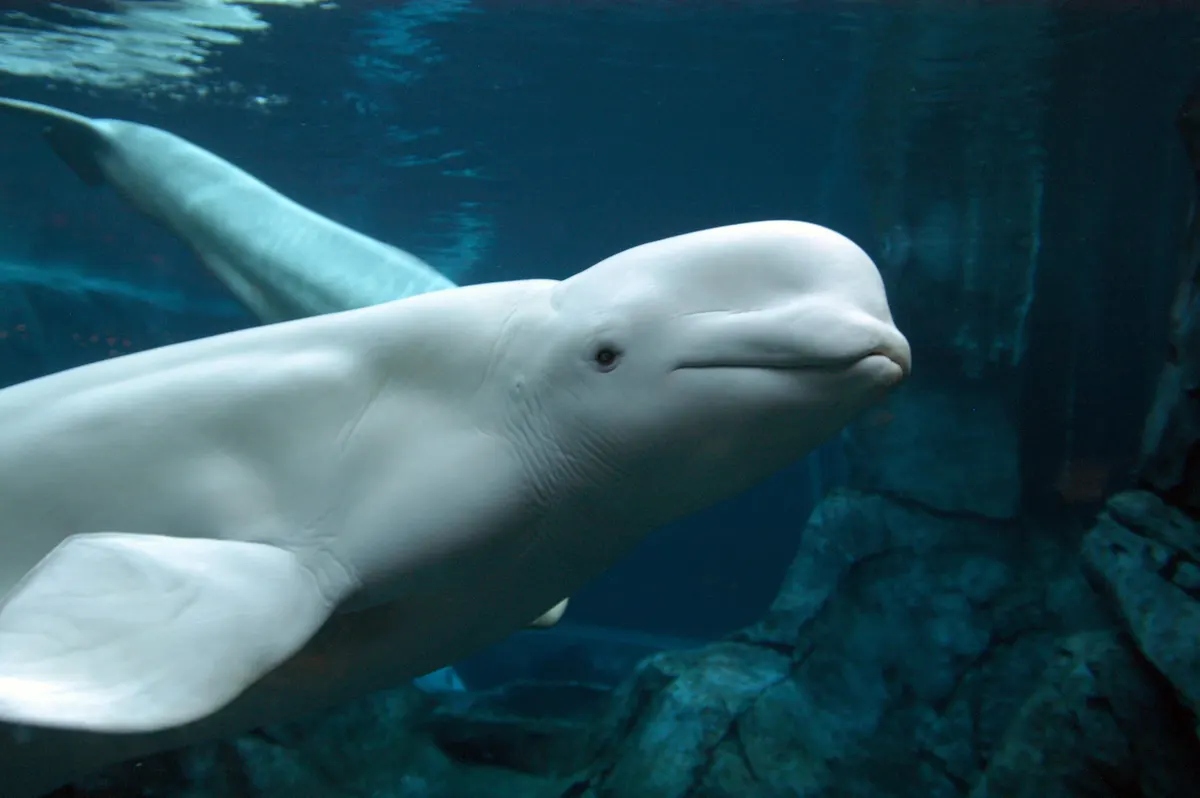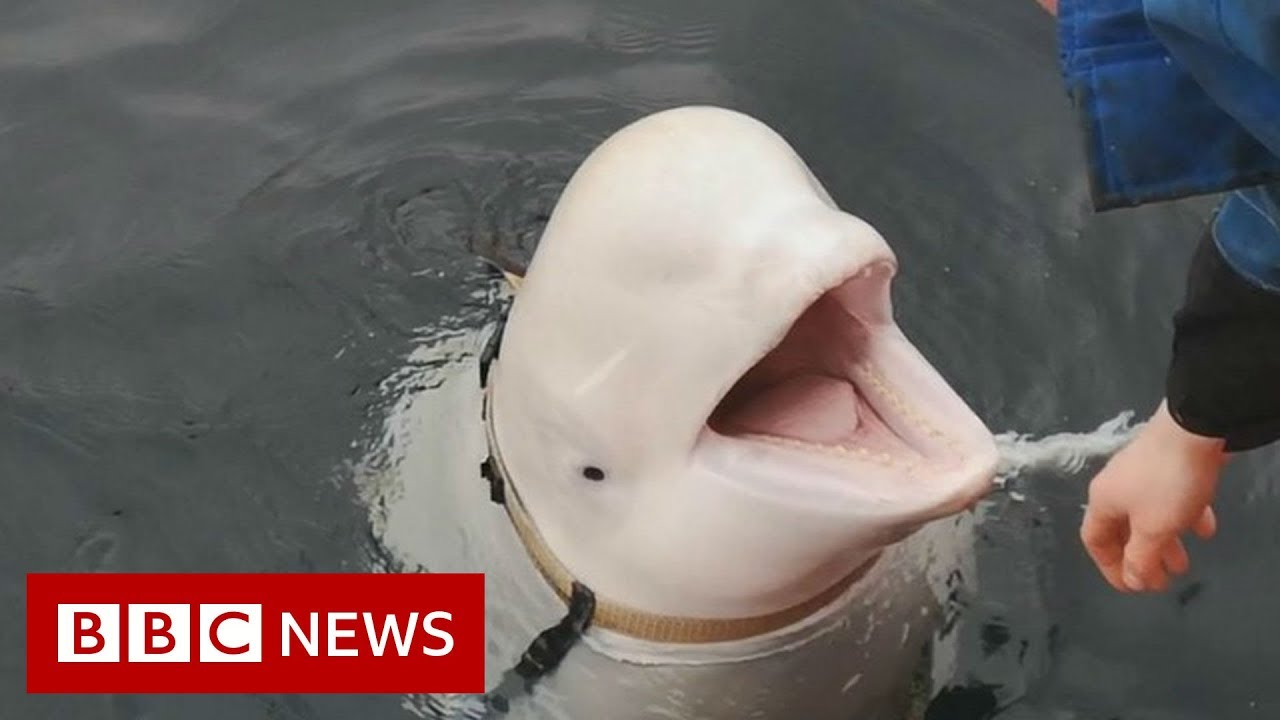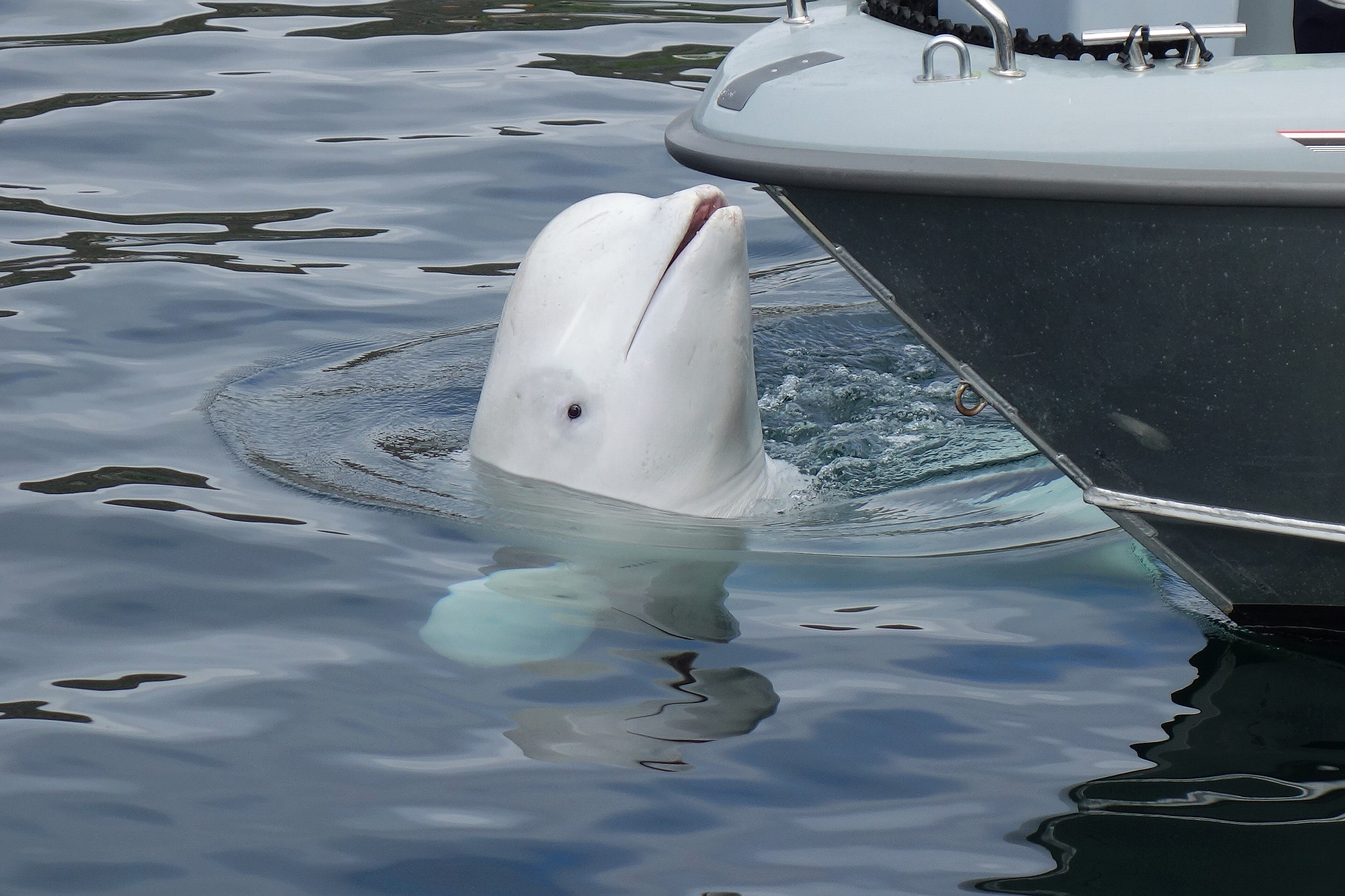The Russian 'Spy' Whale Hvaldimir Has Been Spotted Again Off Sweden's Coast
Hvaldimir, the beluga whale dubbed the "Russian spy" due to its suspected military training, has made another appearance. The Russian 'spy' whale Hvaldimir has been spotted again off Sweden's coast. This enigmatic creature has captivated the world with its unique story and unusual behavior.
Author:Morgan MaverickReviewer:Professor JhizJun 26, 20236.3K Shares300.1K Views

Hvaldimir, the beluga whale dubbed the "Russian spy" due to its suspected military training, has made another appearance. The Russian 'spy' whale Hvaldimir has been spotted again off Sweden's coast. This enigmatic creature has captivated the world with its unique story and unusual behavior.
In this article, we will delve into the latest sightings of Hvaldimir and explore the background behind its controversial designation as a "spy" whale.
The beluga whale's friendly demeanor and apparent affinity for human interaction quickly endeared it to locals and marine biologists.
Numerous accounts emerged of Hvaldimir seeking out human contact, approaching boats, and even retrieving dropped items from the water. These behaviors raised questions about the whale's background and whether it had been habituated to human presence.
The Mysterious Origins Of Hvaldimir
In April 2019, Joar Hesten, a Norwegian fisherman, observed an approximately nine-year-old beluga whale endeavoring to free itself from a device in the waters off Hammerfest in northern Norway.
This led to speculations that the whale had been trained by the Russian military for espionage purposes. However, the exact origins and intentions behind Hvaldimir's training remain shrouded in mystery.
Since its first encounter, the Beluga has acquired the nickname "Hvaldimir," a portmanteau of "Hval" (meaning "whale" in Norwegian) and "dimir" from the portion of Russian President Vladimir Putin's Christian name.
When "Hvaldimir" was discovered near the Norwegian island of Ingoya, he was wearing a harness with a GoPro camera mount and clips bearing the inscription "Equipment of St. Petersburg."
It was therefore hypothesized that the whale could be an authentic Russian-trained spy animal. However, as numerous individuals, including Russian officials, have pointed out, if the whale were an espionage whale, Russian authorities would not leave such blatant evidence of its origin.
Russian reserve colonel, Colonel Viktor Baranets, said in 2019:
“„If we were using this animal for spying, do you think we'd attach a mobile phone number with the message 'Please call this number'? We have military dolphins for combat roles; we don't cover that up. In Sevastopol (in Crimea), we have a center for military dolphins, trained to solve various tasks, from analyzing the seabed to protecting a stretch of water, killing foreign divers, attaching mines to the hulls of foreign ships.- Colonel Viktor Baranets
Following the discovery, the Norwegian domestic intelligence agency conducted an investigation and informed the BBCthat the whale was likely trained by the Russian military.
The Russian government has never made an official statement regarding "Hvaldimir's" instruction. However, they have denied participation in programs designed to train marine animals for spying purposes.
Controversial 'Spy' Allegations
Although no one can corroborate Hvaldimir's espionage training, it would not be unprecedented. Nonhuman spies and reconnaissance assistants, such as dogs and ravens, have a long history in warfare, and the Cold Warspawned a multitude of animal-dependent espionage programs, such as a Cold War-era dolphin training enterprise that Smithsonian believes had a Soviet counterpart.
The U.S. Navy continues to train bottlenose dolphins and California sea lions to detect mines, recover objects, and, as stated on its website, "detect and track undersea targets, even in dark or murky waters." According to reports, the program has also trained beluga whales.
It is widely believed that Hvaldimir was instructed by the Russians for spy or reconnaissance work.
Thomas Nilsen, a Norwegian journalist, surmised in 2019 that the beluga escaped from a pen in which he was being trained for reconnaissance by the Russian navy, citing Google Earth images that appeared to show beluga whale pens in the waters off the coast of northwest Russia.
Nilsen speculated that Hvaldimir may have been smuggled into Norwegian waters on a submarine or other vessel, adding that the whale's story could one day "become a well-written script for a Hollywood film."
Hvaldimir's Reappearance
Hvaldimir was spotted in Hunnebostrand, off the south-western coast of Sweden. Sebastian Strand, a marine biologist with the OneWhale organization, said:
“„We don’t know why he has sped up so fast right now.- Sebastian Strand
adding that it's especially puzzling because the whale is moving "very quickly away from his natural environment."
“„It could be hormones drivinghim to find a mate. Or it could be loneliness, as belugas are a very social species, it could be that he’s searching for other beluga whales.- Sebastian Strand
According to Strand, the whale, estimated to be 13 to 14 years old, is "at an age where his hormones are extremely elevated." The closest beluga population is located in the Svalbard archipelago, which is located halfway between the northern coast of Norway and the north pole.
It is believed that the whale has not seen another beluga since April 2019, when it arrived in Norway. Strand stated that the whale's health "seemed to be very good" over the past few years, and that it had been feeding on wild fish beneath Norway's salmon farms.
His organization, however, was concerned about Hvaldimir's ability to locate food in Sweden and has already noticed a weight loss.
Beluga whales, which can grow up to six meters (20 feet) in length and can live between 40 and 60 years, inhabit the frigid waters of Greenland, northern Norway, and Russia.
Conservation Efforts And Future Plans
In light of Hvaldimir's unique circumstances, several organizations and individuals have been involved in efforts to monitor and protect the whale. Conservationists are particularly concerned about the impact of human interaction on Hvaldimir's welfare and have emphasized the importance of allowing the beluga to exhibit natural behaviors without undue interference. Plans are underway to establish a sanctuary where Hvaldimir can receive proper care and continue to be observed by researchers.
Research On Hvaldimir's Behavior And Interactions
Research on Hvaldimir's behavior and interactions has been a subject of great interest among marine biologists and scientists. As a beluga whale with a unique background and suspected military training, studying Hvaldimir provides valuable insights into the intelligence and adaptability of these marine mammals, as well as the impact of human interaction on their behavior.
Observing Social Interactions
One aspect of research on Hvaldimir focuses on its social interactions with both humans and other marine animals. Beluga whales are known for their highly social nature, and understanding how Hvaldimir interacts with other whales or responds to human presence can shed light on its social dynamics and the impact of its upbringing and training.
Researchers closely observe Hvaldimir's behavior when it comes into contact with boats or encounters other cetaceans in its environment. This allows them to assess its response patterns, such as vocalizations, body language, and group dynamics. Such observations help scientists understand the extent to which Hvaldimir's training may have influenced its social behavior and integration with other beluga whales.
Assessing The Effect Of Human Interaction
Hvaldimir's friendliness towards humans has been well-documented, with numerous accounts of the whale seeking out human contact and displaying playful behavior. Researchers are interested in understanding how Hvaldimir's interactions with humans have evolved and whether they differ from natural beluga behavior.
By studying the frequency and nature of human encounters, researchers can assess the impact of prolonged interaction on Hvaldimir's behavior and well-being. It is essential to strike a balance between allowing Hvaldimir to exhibit natural behaviors and minimizing any potential negative effects caused by excessive human interaction.

Is this whale a Russian spy? - BBC News
Investigating Intelligence And Cognitive Abilities
Beluga whales are renowned for their intelligence, and Hvaldimir's training has raised intriguing questions about its cognitive abilities. Research efforts aim to explore the extent to which Hvaldimir's training has influenced its problem-solving skills, communication abilities, and capacity for learning.
Through a series of cognitive tests and experiments, researchers can assess Hvaldimir's ability to recognize and respond to different stimuli, navigate complex tasks, and demonstrate cognitive flexibility. These studies contribute to our understanding of the cognitive capacities of beluga whales and provide insights into the effects of training and human interaction on their mental abilities.
Impact Of Training And Captivity
Hvaldimir's history as a trained whale raises important ethical considerations regarding the impact of captivity and non-natural environments on marine mammals. Researchers investigate the effects of Hvaldimir's training and subsequent release on its physical and psychological well-being.
Studies may involve assessing Hvaldimir's stress levels, feeding patterns, and overall health to determine the long-term implications of its previous training and captivity.
By understanding the potential consequences of such experiences, researchers can contribute to the development of guidelines and policies aimed at ensuring the welfare of captive and rehabilitated animals.
Conservation And Management Strategies
The research conducted on Hvaldimir's behavior and interactions plays a vital role in formulating effective conservation and management strategies for beluga whales and other cetaceans.
Insights gained from studying Hvaldimir's responses to human interaction and its integration with wild populations can inform guidelines and regulations regarding responsible human-wildlife interactions in marine environments.
Additionally, research on Hvaldimir's behavior and social dynamics can contribute to the development of conservation programs aimed at protecting beluga whale populations and their habitats. By understanding the complexities of beluga behavior, researchers can propose measures to mitigate threats and ensure the long-term survival of these magnificent marine mammals.
People Also Ask
Is Hvaldimir Really A Spy Whale?
The designation of Hvaldimir as a "spy" whale is based on speculation due to the harness found on its back, which had Russian markings. However, the true purpose behind its training remains unknown.
Where Was Hvaldimir First Spotted?
Hvaldimir was first discovered swimming near a Norwegian fishing village in April 2019, captivating locals and marine biologists with its friendly behavior.
What Is The Purpose Of The Harness Found On Hvaldimir?
The harness found on Hvaldimir's back raised questions about its origins and training. It was suspected to be a marine mammal research tool or a potential military device, but its exact purpose remains unconfirmed.
Why Is Hvaldimir Of Interest To Researchers?
Researchers are intrigued by Hvaldimir's behavior and its interactions with humans and other marine animals. Studying the beluga whale can provide insights into its background, training, and the impact of human interaction on its well-being.
What Efforts Are Being Made To Protect Hvaldimir?
Conservationists are working to monitor and protect Hvaldimir, ensuring its welfare and allowing it to exhibit natural behaviors. Plans are in motion to establish a sanctuary where the whale can receive proper care and ongoing observation by researchers.
Conclusion
Hvaldimir, the Russian 'spy' whale, continues to intrigue and captivate both researchers and the general public. The Russian 'spy' whale Hvaldimir has been spotted again off Sweden's coast. This has reignited the debate surrounding its origins and training.
While the mystery of Hvaldimir's past remains unsolved, efforts to ensure its well-being and protect it from unnecessary human interference are underway. As we continue to learn more about this enigmatic creature, Hvaldimir's story serves as a reminder of the complex and fascinating nature of the animal kingdom.

Morgan Maverick
Author
Morgan Maverick is an unorthodox news reporter driven by an insatiable hunger for the truth. Fearless and unconventional, he uncovers hidden narratives that lie beneath the surface, transforming each news piece into a masterpiece of gritty authenticity. With a dedication that goes beyond the boundaries of conventional journalism, Morgan fearlessly explores the fringes of society, giving voice to the marginalized and shedding light on the darkest corners.
His raw and unfiltered reporting style challenges established norms, capturing the essence of humanity in its rawest form. Morgan Maverick stands as a beacon of truth, fearlessly pushing boundaries and inspiring others to question, dig deeper, and recognize the transformative power of journalism.

Professor Jhiz
Reviewer
Professor Jhiz brings fun to teaching anatomy. Born in China, she shares her fascination for how the body works.
Students say her lectures are lively with jokes and stories. She draws cartoon diagrams that highlight structures creatively.
Professor seeks to inspire curiosity and joy in anatomy. She treats each class like a show using props and costumes.
When not teaching, Jhiz enjoys karaoke and novelty socks. Her goal is passing on a spirit of wonder to students.
Latest Articles
Popular Articles
